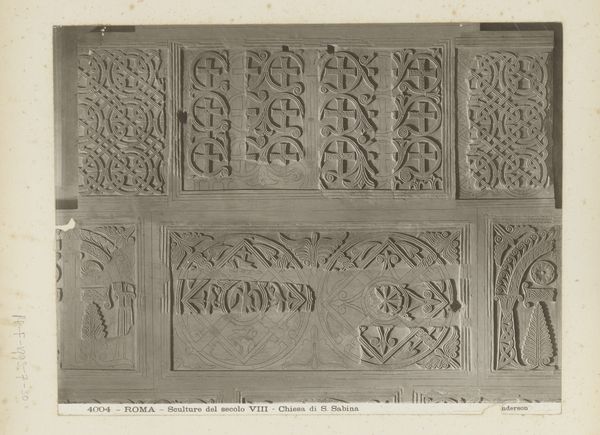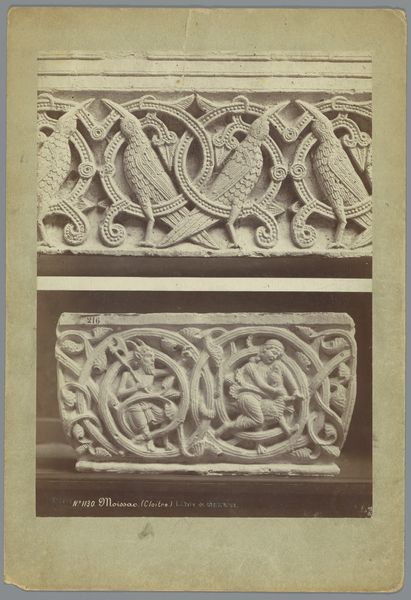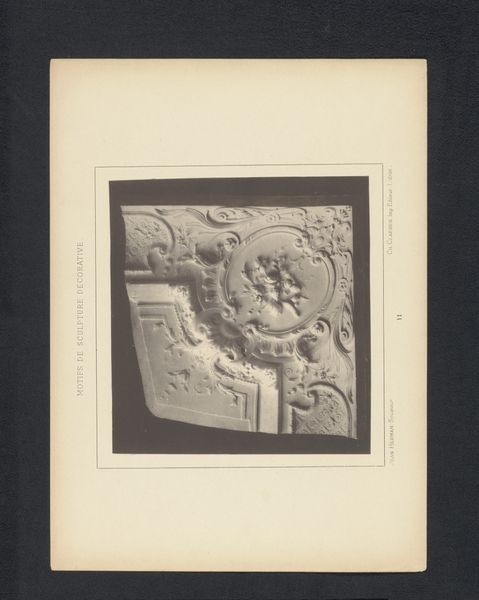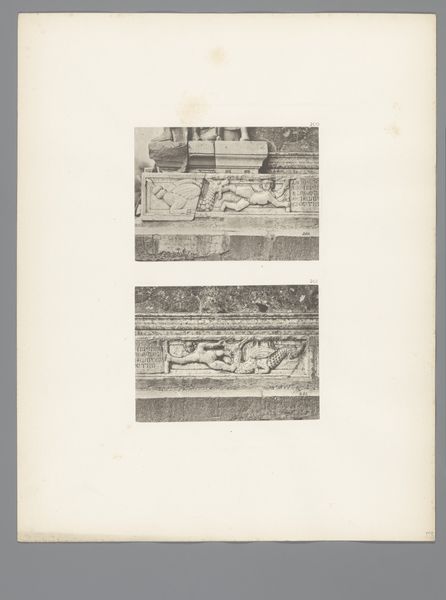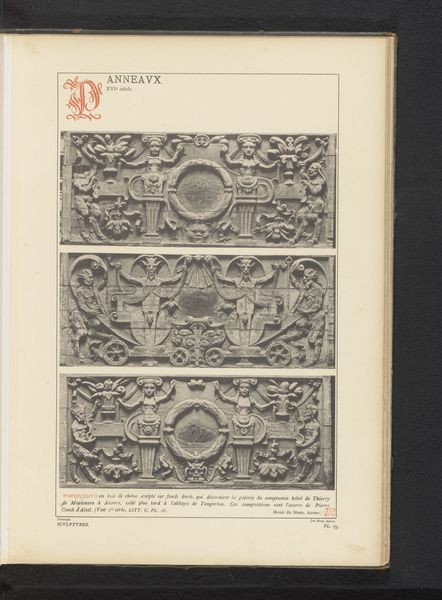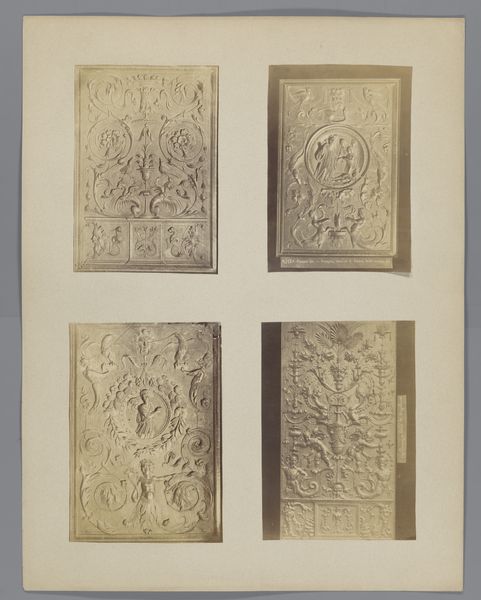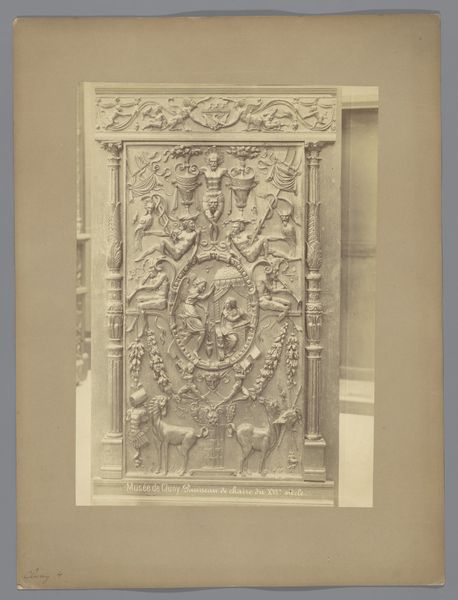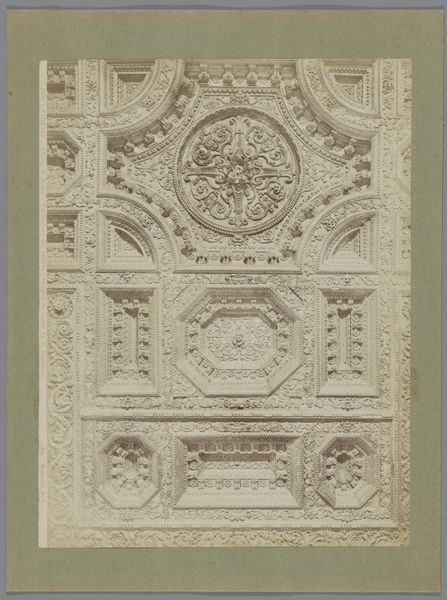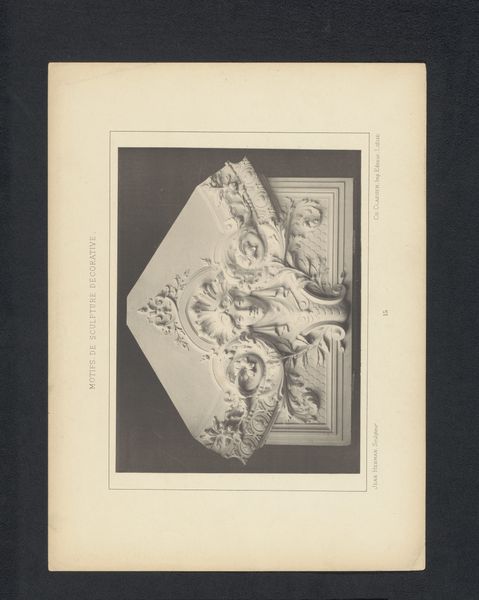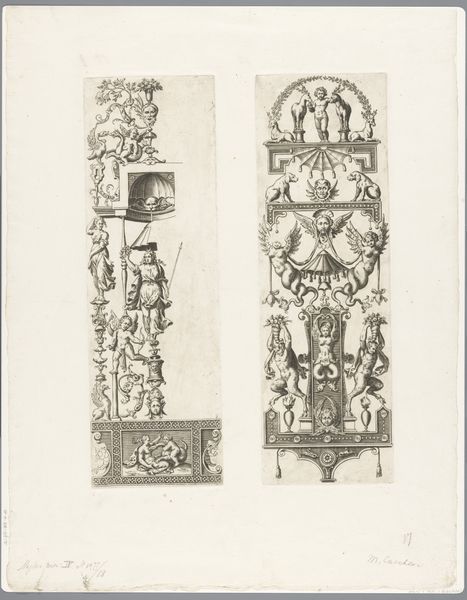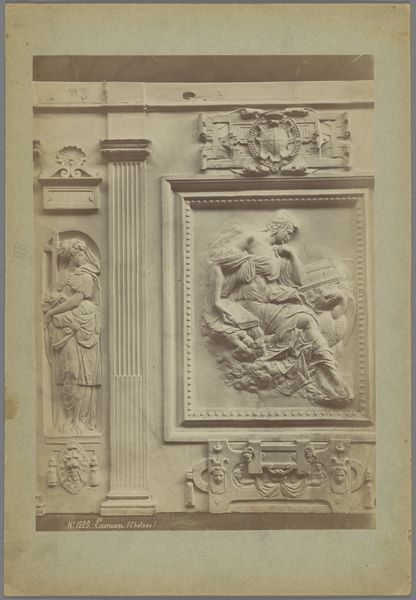
Dimensions: height 350 mm, width 248 mm
Copyright: Rijks Museum: Open Domain
Curator: These are photographs of two reliefs with arabesques and candelabras, dating from around 1875 to 1900. They are currently held at the Rijksmuseum, and were created by Médéric Mieusement. Editor: My immediate impression is of detailed, almost excessively ornate craftsmanship. They look delicate, even fragile, preserved through this photographic medium. Curator: Exactly. These reliefs evoke the Neoclassical period's fascination with ornamentation, specifically, in this instance, what was understood as "classical" through the lens of power and wealth during European colonialism. What narratives do these arabesques perform and whose cultural heritage is alluded to or erased through them? Editor: I see them as primarily objects of labour. Imagine the hours required to carve such detail! The materiality of the original reliefs, probably plaster or stucco, speaks of a deliberate process and a specific kind of skilled work meant to emulate marble, available only to the wealthy classes. The photograph reproduces the reliefs for wider consumption, yet abstracts them from their context. Curator: Absolutely, and how that photograph then participates in a kind of commodification. Were these photographs reproduced for wider dissemination of 'taste' to a rising middle class keen to emulate the decorative sensibilities of the elites, thereby furthering capitalist social mobility through mimetic design? What happens when artistic creation is harnessed by systems of class and social stratification? Editor: Precisely, think of the photographic print itself, also a manufactured item involving its own labour and material processes, a far cry from our easy digital images now. What's lost in translation when something originally tactile and three-dimensional is flattened into a photographic image, losing details about mass, form, the hand? Curator: These images allow us to consider those complex layers. Both reliefs remind us about the dialogues that historical forms hold with contemporary identity politics around representation, access and dissemination of cultural heritage and even authorship of those aesthetics themselves. Editor: And for me, the enduring value rests on prompting us to reflect on what making means, then and now; the chain of materials, production, and consumption connecting these intricate works to broader societal structures.
Comments
No comments
Be the first to comment and join the conversation on the ultimate creative platform.

